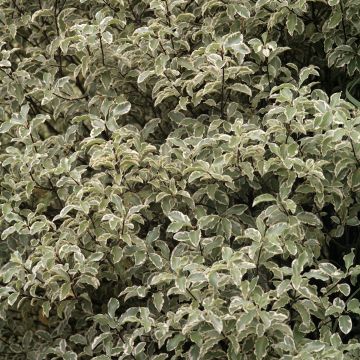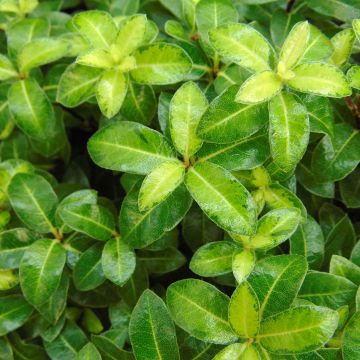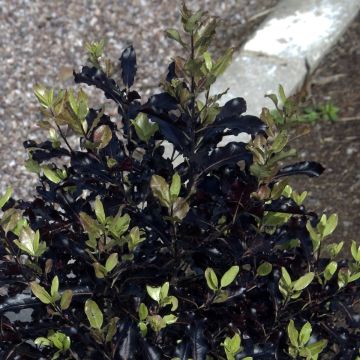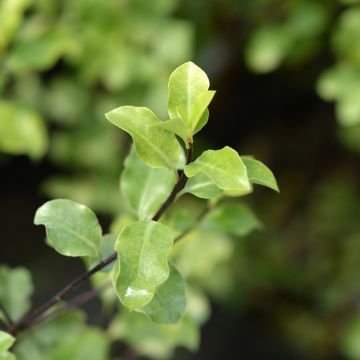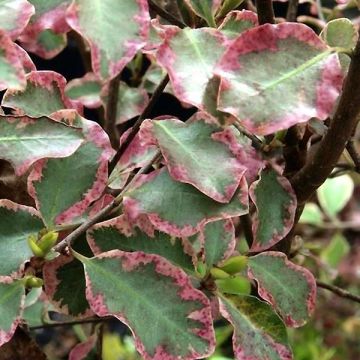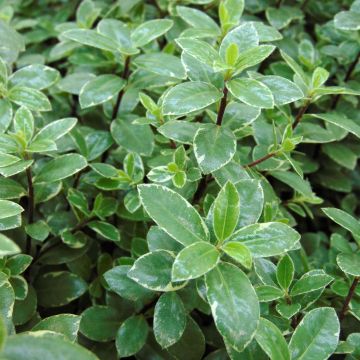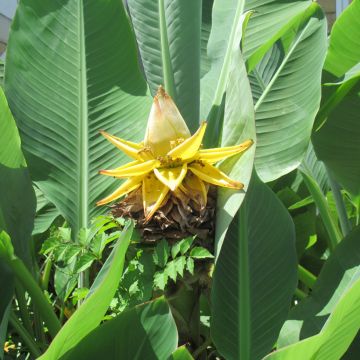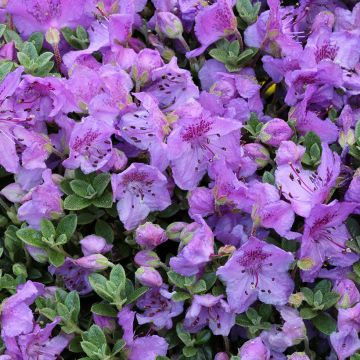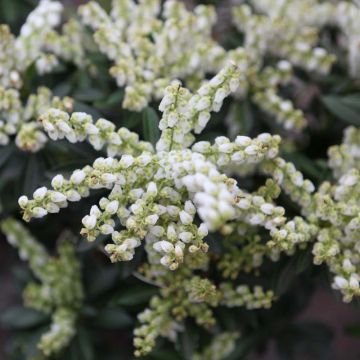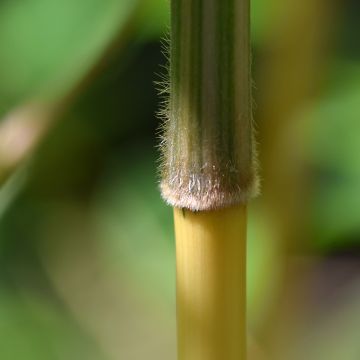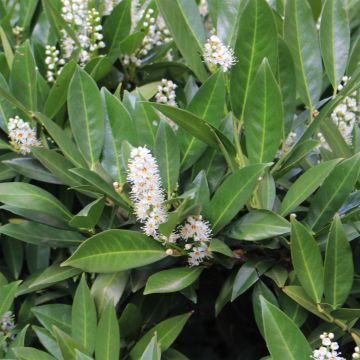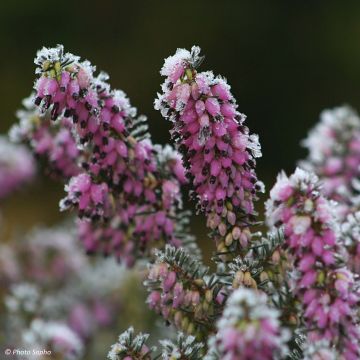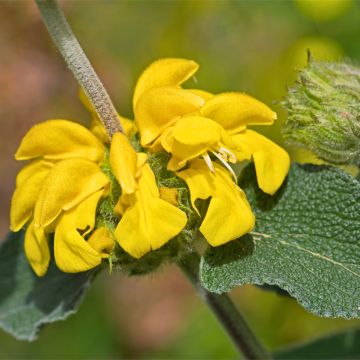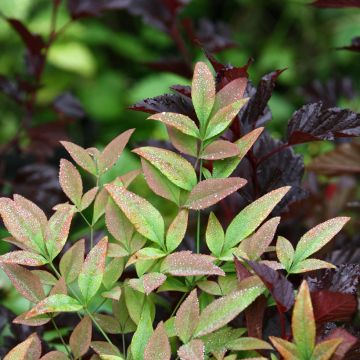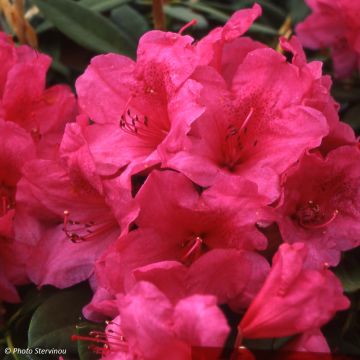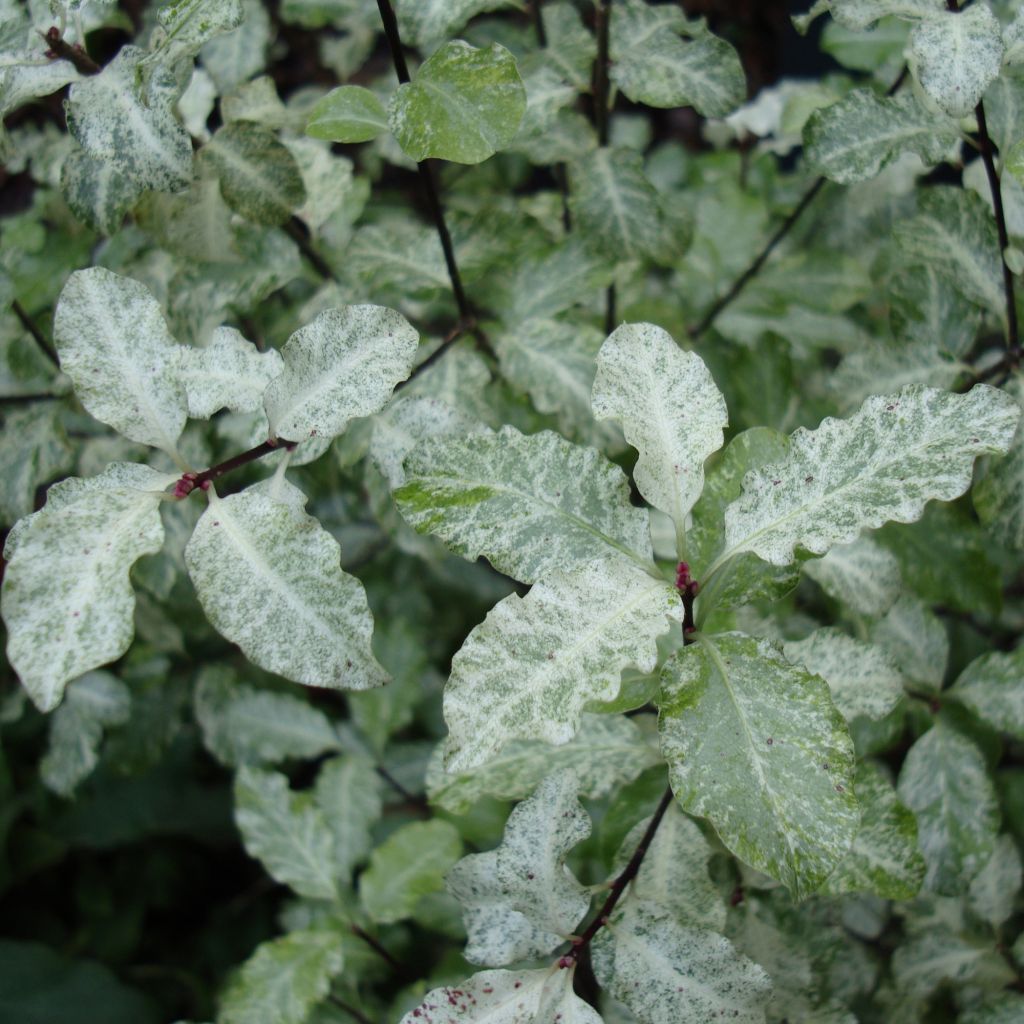

Pittosporum tenuifolium Irene Patterson - Kohuhu
Pittosporum tenuifolium Irene Patterson - Kohuhu
Pittosporum tenuifolium Irene Patterson
Tawhiwhi, Kohuhu, Black Matipo, New Zealand Pittosporum
Arrived a bit tilted, but the branches held on along with the leaves. Very nice habit, but a bit smaller than in the picture. I hope it will survive the winter.
celine, 24/09/2023
This item cannot be shipped to the selected country
Delivery charge from €5.90
Delivery charge from €5.90
More information
Schedule delivery date,
and select date in basket
This plant carries a 24 months recovery warranty
More information
We guarantee the quality of our plants for a full growing cycle, and will replace at our expense any plant that fails to recover under normal climatic and planting conditions.
From €5.90 for pickup delivery and €6.90 for home delivery
Express home delivery from €8.90.
From €5.90 for pickup delivery and €6.90 for home delivery
Express home delivery from €8.90.


Does this plant fit my garden?
Set up your Plantfit profile →
Description
The Pittosporum tenuifolium 'Irene Patterson', with its almost snowy evergreen foliage, is undoubtedly one of the most attractive varieties of small-leaved Pittosporum. This small dense bush, with a very compact habit, is adorned with a very shiny foliage, silver, intensely speckled and variegated with white and almond green, often tinged with pink in winter. It offers a magnificent spectacle in summer, when it produces young cream-coloured shoots within its sparkling foliage, adorned with a few purple-violet flowers that are very fragrant at night. This plant, adapted to mild climates and coastal areas, will thrive in a sunny position, in well-drained soil, in a dry garden, or in a large pot to be stored in cold climates.
This bush, belonging to the Pittosporaceae family, originates from dry regions located east of the Southern Alps in New Zealand. Over time, it forms a dense and rounded bush measuring 1.50 to 2 metres (4 ft 11 in- 7 ft 6 in) in height, with a spread of 1 to 1.50 metres (3 ft 4 in - 4 ft 11 in). Its foliage is its main asset. Its thin, purple-to-almost-black and spreading stems bear evergreen, alternate, entire, oval, thick, very shiny, leathery leaves with slightly undulating edges. They are small, not exceeding 3 to 4 cm (1.2 - 1.6 in) in length and 1.5 to 2 cm (0.6 - 0.8 in) in width. They emerge cream-white, then develop a beautiful silver hue, speckled with white and variegated with almond green at the centre. The green colour intensifies somewhat in summer. The cold weather gives them a pinkish tone, especially on the lighter areas. The flowering, not very abundant in this variety, takes place in late spring or early summer. The small black flowers, a few millimetres in diameter, emit a honey scent that is particularly noticeable at night. They are followed by the formation of a few round fruits, initially green and then almost black when ripe.
Hardy down to -7C°/-10°C, the Pittosporum Irene Patterson requires a dry, not too chalky, well-drained soil, a warm, sunny position protected from prevailing winds. It tolerates sea spray perfectly, allowing gardeners in coastal areas to use it as a standalone plant or in a free hedge. In mild climates, it can also be planted on a large slope or at the back of a border. Pair it with Pistacia lentiscus, Olearia, Atriplex halimus, lavender, rosemary, grevilleas, escallonias, or combine it with the silver foliage of artemisias. In cold regions, it can be grown in a container on a terrace to enjoy its delicate scent and exceptional foliage.
Report an error about the product description
Pittosporum tenuifolium Irene Patterson - Kohuhu in pictures
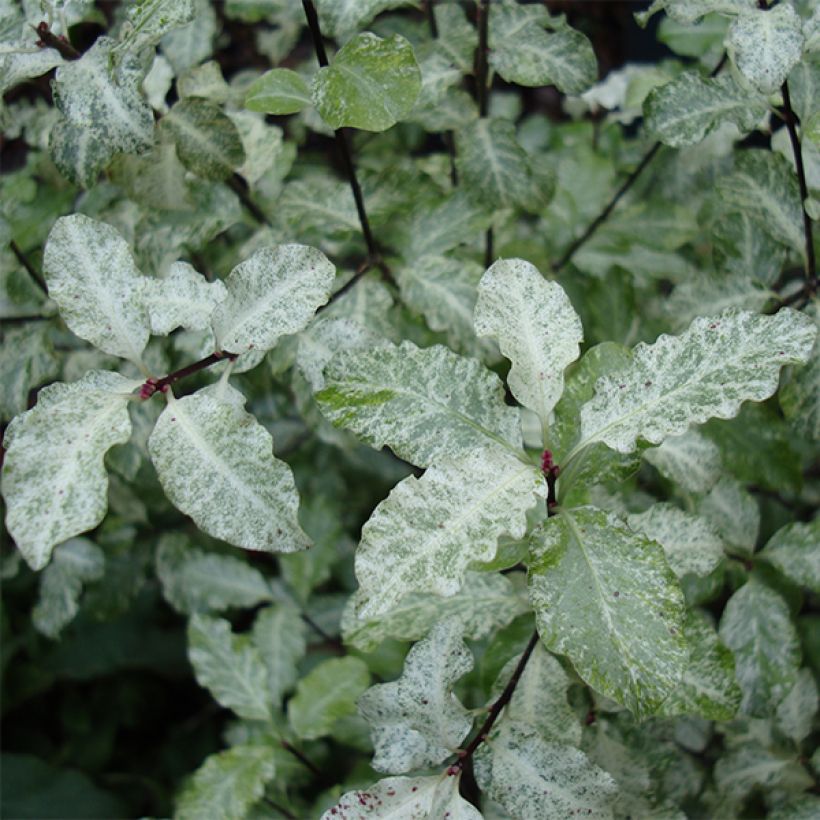

Plant habit
Flowering
Foliage
Botanical data
Pittosporum
tenuifolium
Irene Patterson
Pittosporaceae
Tawhiwhi, Kohuhu, Black Matipo, New Zealand Pittosporum
Cultivar or hybrid
Other Pittosporum
Planting and care
The Pittosporum Irene Patterson is preferably planted in spring in a cold climate, or in September-October in a mild climate. Plant it in fertile, dry, not too chalky soil, and well-drained. When planting, mix with your garden soil some leaf compost and coarse sand in equal parts. Water the plant abundantly once or twice a week to help it to establish itself. Not very hardy (-7°C/-10°C), choose a warm location, in full sun and sheltered from prevailing winds. Mulch the base immediately. Plant it along a south-facing wall in areas with harsh winters. In cooler climates, use horticultural fleece or protect it in a frost-free green house or glass house for the winter. To encourage branching during the early years of planting, pinch the young shoots. Once the plant is mature, prune any untidy branches at the end of the season. This plant can be easily shaped into a ball or hedge as it can tolerate pruning very well.
Planting period
Intended location
Care
-
, onOrder confirmed
Reply from on Promesse de fleurs
Evergreen shrubs
Haven't found what you were looking for?
Hardiness is the lowest winter temperature a plant can endure without suffering serious damage or even dying. However, hardiness is affected by location (a sheltered area, such as a patio), protection (winter cover) and soil type (hardiness is improved by well-drained soil).

Photo Sharing Terms & Conditions
In order to encourage gardeners to interact and share their experiences, Promesse de fleurs offers various media enabling content to be uploaded onto its Site - in particular via the ‘Photo sharing’ module.
The User agrees to refrain from:
- Posting any content that is illegal, prejudicial, insulting, racist, inciteful to hatred, revisionist, contrary to public decency, that infringes on privacy or on the privacy rights of third parties, in particular the publicity rights of persons and goods, intellectual property rights, or the right to privacy.
- Submitting content on behalf of a third party;
- Impersonate the identity of a third party and/or publish any personal information about a third party;
In general, the User undertakes to refrain from any unethical behaviour.
All Content (in particular text, comments, files, images, photos, videos, creative works, etc.), which may be subject to property or intellectual property rights, image or other private rights, shall remain the property of the User, subject to the limited rights granted by the terms of the licence granted by Promesse de fleurs as stated below. Users are at liberty to publish or not to publish such Content on the Site, notably via the ‘Photo Sharing’ facility, and accept that this Content shall be made public and freely accessible, notably on the Internet.
Users further acknowledge, undertake to have ,and guarantee that they hold all necessary rights and permissions to publish such material on the Site, in particular with regard to the legislation in force pertaining to any privacy, property, intellectual property, image, or contractual rights, or rights of any other nature. By publishing such Content on the Site, Users acknowledge accepting full liability as publishers of the Content within the meaning of the law, and grant Promesse de fleurs, free of charge, an inclusive, worldwide licence for the said Content for the entire duration of its publication, including all reproduction, representation, up/downloading, displaying, performing, transmission, and storage rights.
Users also grant permission for their name to be linked to the Content and accept that this link may not always be made available.
By engaging in posting material, Users consent to their Content becoming automatically accessible on the Internet, in particular on other sites and/or blogs and/or web pages of the Promesse de fleurs site, including in particular social pages and the Promesse de fleurs catalogue.
Users may secure the removal of entrusted content free of charge by issuing a simple request via our contact form.
The flowering period indicated on our website applies to countries and regions located in USDA zone 8 (France, the United Kingdom, Ireland, the Netherlands, etc.)
It will vary according to where you live:
- In zones 9 to 10 (Italy, Spain, Greece, etc.), flowering will occur about 2 to 4 weeks earlier.
- In zones 6 to 7 (Germany, Poland, Slovenia, and lower mountainous regions), flowering will be delayed by 2 to 3 weeks.
- In zone 5 (Central Europe, Scandinavia), blooming will be delayed by 3 to 5 weeks.
In temperate climates, pruning of spring-flowering shrubs (forsythia, spireas, etc.) should be done just after flowering.
Pruning of summer-flowering shrubs (Indian Lilac, Perovskia, etc.) can be done in winter or spring.
In cold regions as well as with frost-sensitive plants, avoid pruning too early when severe frosts may still occur.
The planting period indicated on our website applies to countries and regions located in USDA zone 8 (France, United Kingdom, Ireland, Netherlands).
It will vary according to where you live:
- In Mediterranean zones (Marseille, Madrid, Milan, etc.), autumn and winter are the best planting periods.
- In continental zones (Strasbourg, Munich, Vienna, etc.), delay planting by 2 to 3 weeks in spring and bring it forward by 2 to 4 weeks in autumn.
- In mountainous regions (the Alps, Pyrenees, Carpathians, etc.), it is best to plant in late spring (May-June) or late summer (August-September).
The harvesting period indicated on our website applies to countries and regions in USDA zone 8 (France, England, Ireland, the Netherlands).
In colder areas (Scandinavia, Poland, Austria...) fruit and vegetable harvests are likely to be delayed by 3-4 weeks.
In warmer areas (Italy, Spain, Greece, etc.), harvesting will probably take place earlier, depending on weather conditions.
The sowing periods indicated on our website apply to countries and regions within USDA Zone 8 (France, UK, Ireland, Netherlands).
In colder areas (Scandinavia, Poland, Austria...), delay any outdoor sowing by 3-4 weeks, or sow under glass.
In warmer climes (Italy, Spain, Greece, etc.), bring outdoor sowing forward by a few weeks.

































